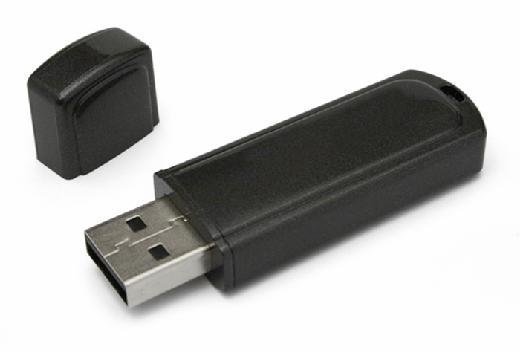USB 3.0 (SuperSpeed USB)
What is USB 3.0 (SuperSpeed USB)?
USB 3.0 is a Universal Serial Bus (USB) data transfer standard commonly used for computer peripherals. Mostly found on USB-A or USB-C type connectors, USB 3.0 has undergone several revisions and supports speeds between 5 and 20 Gbps. USB 3.0 is also known as SuperSpeed USB.
The most common port for peripheral devices today, USB 3.0 is frequently used to connect external high-speed devices like thumb drives, network adapters and high-resolution cameras. Because USB 3.0 is backwards compatible with USB 2.0 and USB 1.1 devices, most peripherals, such as mice, keyboards and printers, can be plugged into them.
Thunderbolt and USB4 (aka USB 4.0) are newer standards that provide faster speeds and more capabilities than USB 3.0. Despite this, USB 3.0 remains a popular connector due to its ease of implementation and low cost for manufacturers as well as its broad back compatibility.
Modern computers will often include USB 3.0 ports as USB A and USB C connectors. USB 3.0 still offers good enough speed for almost all consumer uses except extremely fast flash based external data transfers.

What is the history and generations of USB 3.0?
USB 3.0 was first introduced in November 2008, with consumer devices becoming available in 2010. The industry designed it to increase the maximum throughput of the USB standard to compete with other connectors, such as firewire, while maintaining backwards compatibility with existing USB 2.0 devices. USB 3.0 also adds full-duplex communication.
The first version was USB 3.0 and supports speeds up to 5 Gbps. Newer revisions would also call this USB 3.1 Gen 1 and USB 3.2 Gen 1x1.
The standard was updated to USB 3.1 in January 2013. This introduced a new mode called SuperSpeed+ or USB 3.1 Gen 2. It could operate at 10 Gbps. It also has better encoding with less encoding overhead, resulting in faster effective data rates.
The USB 3.2 standard was introduced in July 2017. The USB 3.2 standard includes a new transfer mode of 20 Gbps that works with USB-C connectors. It is known as SuperSpeed+ or USB Gen 2x2. The 3.2 standard also renamed the older transfer speeds.
Because of the somewhat complicated naming, new USB 3.0 devices should include the maximum supported transfer speed in the device logo. Fortunately all USB data transfer rate standards are backwards compatible, meaning that almost any device can be used with any plug, and it will automatically fall back to the best mutually supported speed.
The USB4 standard was introduced in August 2019. It offers better speed, Power Delivery, and video out while maintaining backwards compatibility with USB 3.0.
What are the different types of USB 3.0 connectors?
To support the increased speed, USB 3.x requires five more pins than USB 2.0. In many cases the new connector was designed to maintain physical compatibility with old connectors.
The USB A connector is the rectangular connector most associated with USB. Additional pins were added to the internal s of the plug, resulting in a plug that looks almost the same. To differentiate between USB 3 and older standards, the plastic inserts should be colored blue, specifically Pantone 300C. The blue coloring is merely a recommendation, though, so many device manufacturers eschew the color for aesthetic reasons.
The USB B connector is the squarer connector most often seen on external client devices, such as printers or some external hard drives. It has been functionally replaced by USB C.
The Micro USB B connector is the flat and small connector seen on devices such as external hard drives, digital cameras and some smart phones. It has been functionally replaced by USB C.
The USB C connector is the oval plug that can be seen on host computers and client devices. It supports the fastest transfer speeds and additional alt-modes such as Power Delivery or DisplayPort out.
For the best speeds, cables must also support USB 3.0. For example, some USB C charging cables may be designed for high current Power Delivery, but they would not support USB 3 SuperSpeed and would only transfer data at USB 2 speeds.
You can easily tell if you have a USB 3 port if it is blue or has the logo consisting of the letters "SS" with a trident symbol.
What are additional USB 3.0 protocols?
USB C connectors include additional pins that expand the capabilities of a single plug. They can be combined and used simultaneously. This allows a docking station to have a USB hub and a video output while charging a laptop, all over a single cable. Care must be taken, though, as not all ports support all these modes. Consult manufacturer documentation for device compatibility.
Power Delivery gives support for bi-directional charging. It can commonly go up to 100 Watts of power, with newer standards supporting even more.
DisplayPort alt-mode is a digital video output with support for multiple displays, daisy chaining, at resolutions up to 8k.
HDMI alt-mode is a digital video output. While a standard for HDMI alt-mode output for USB C exists, devices often use the DisplayPort in an HDMI connector.
Mobile High-Definition link is an older digital video standard to output HDMI from USB. It is now rarely used.
Thunderbolt 3 is an Intel licensed technology that incorporates USB 3, Power Delivery, DisplayPort, peripheral component interconnect express, and 40 Gbps data transfer capability on a single port.
Audio adapter accessories sends analog audio over USB C pins. It can send stereo out and a microphone in. It was used on some smartphones but is now rarely seen.
See how to choose the right PC for business.








